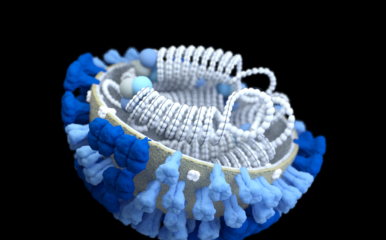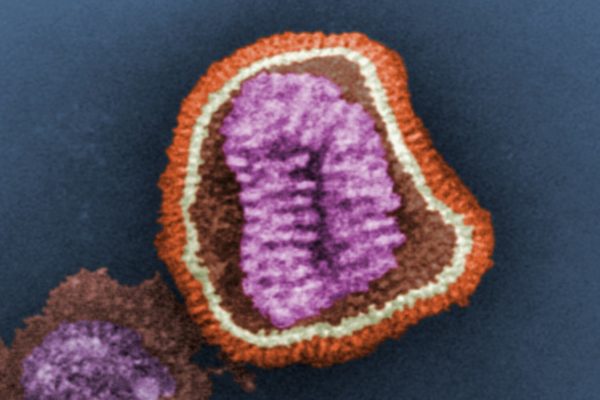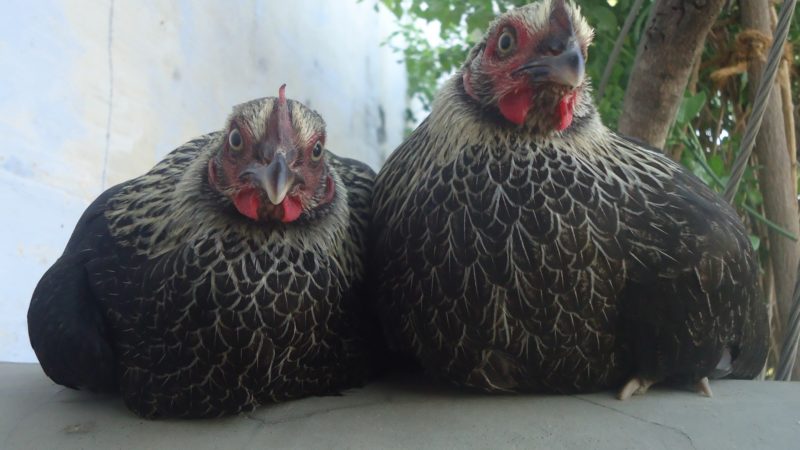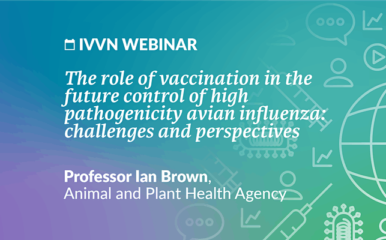
Blog post
Tiny pathogens with a big impact
Published on 07/07/2022
A 12-step guide to the avian influenza virus and how it can jump from birds to people.

CDC/ Erskine. L. Palmer, Ph.D.; M. L. Martin
 This blog focuses on the ZOODLE word ‘VIRUS’.
This blog focuses on the ZOODLE word ‘VIRUS’.
One Health Poultry Hub investigators are researching the avian influenza virus for safer poultry production and healthier chickens and people.

- Viruses are obligate intracellular PARASITES. This means that to reproduce they need to get inside cells. Once inside they can exist in harmony with no adverse effects on the cell – or they can go on to cause disease.
- Avian influenza – commonly known as ‘bird flu’ – is caused by avian influenza viruses (AIVs). Influenza viruses are very small indeed with diameters ranging from 80 to 120 billionths of a metre (80-120 nanometres) … and now for the technical bit …
- AIVs are enveloped, negative sense, single-stranded RNA viruses classified within the genus Alphainfluenzavirus, family Orthomyxoviridae. AIV genomes are made up of:
– eight segments of RNA,
– totalling approximately 13,500 nucleotides,
– that encode at least 10 ‘core’ proteins,
– with some strains making up to 18 different proteins by using alternate reading frames. - AIVs are subtyped according to their surface glycoproteins – the haemagglutinin and neuraminidase. There are 16 different avian haemagglutinins and nine neuraminidases described and they are critical for virus entry and exit from the host cell; they are also the main targets for effective IMMUNE RESPONSES to these viruses.
- What happens when an animal is infected with AIVs depends upon both host (the animal infected) and viral factors. From a host perspective, this can include age, immune status, nutritional status and the presence of pre-existing infections. From a viral perspective this is harder to define although certain genetic signatures in several virus genes have been identified that associate with host adaptation and virulence.
- For infection of poultry, AIVs are classified into one of two categories: low pathogenicity or high pathogenicity. PATHOGENICITY refers to the virus’s ability to cause disease.
- The low path/high path (as scientists tend to term it) distinction refers specifically to a genetic signature within a region of the haemagglutin (called the cleavage site). This signature is a major factor contributing to DISEASE outcome – low path viruses are restricted in their location whereas high path viruses rapidly spread throughout the host.
- Infection of birds with low path AIV generally causes mild respiratory or gut disease, decreased egg production and only rarely death. However, occasionally a more invasive disease is caused, despite the low path cleavage signature, resulting in moderate to high levels of mortality in domestic fowl.
- Infection with high path AIVs causes severe acute systemic disease with sudden-onset HIGH FLOCK MORTALITY in farmed birds, including chickens.
- The outcome of infections in wild birds with AIVs is hard to predict. Some avian species can tolerate infection with high path AIVs and they may excrete (and spread) virus but not get ill. In contrast other wild bird species are highly susceptible to high path AIVs and succumb with high mortality levels.
- What risk do AIVs pose to people? When AIVs replicate, like most RNA viruses they are prone to ‘mutate’ (change) genetically. This means changes are introduced frequently, contributing to constant genetic evolution. Where this occurs in genes coding for the haemagglutin or neuraminidase, this is known as genetic drift. If co-infection of a single cell with two different AIVs happens (and it does) the genetic material may get mixed up so when new viruses are packaged up and released, they can contain a mix of genes coming from either of the infecting viruses. This is termed genetic reassortment and if it involves swapping of genes encoding haemagglutinin or neuraminidase it is known as antigenic shift, an occurrence that can result in the emergence of a virus to which there is little or no pre-existing IMMUNITY within populations.
- The ZOONOTIC RISK (i.e., risk of spread to humans) from AIVs depends on multiple factors, including further reassortment between viruses that were already reassorted and established in non-bird populations (usually pigs or people). The global risk of these viruses is assessed through One Health linkages between the medical and veterinary sectors. Here, virus emergence is tracked to enable rapid development of appropriate vaccines for people. Vaccination in poultry is variable at global level with widespread use in particular among Asian countries with focus on H5 and H9 strains. Elsewhere use of vaccination is more limited in poultry, although the recent high path outbreaks, seen across the UK, Europe and North America may be the game changer that leads to poultry vaccination being considered in these regions.


